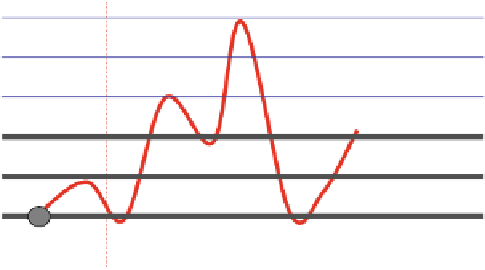Information Technology Reference
In-Depth Information
Scale
world
community
school
class
group
individual
50 min
Time
Fig. 26.1
A musical notation for integrated scripts
Again, this segmentation is very pragmatic: level 5 adds logistics and security con-
cerns to perform out of school the activities that are performed in the school at
level 4.
Sequentiality
A piece of music is more than a set of notes, the sequence makes it all. A method
that “works well” is not just a random sequence of activities; there is something
in the sequence that turns discrete activities into a consistent whole, there is a
scenario.
Orchestration has a flavour of linearity. Some verses or refrain can be moved
and repeated, but nonetheless, the idea of orchestration refers to some sequentiality.
In terms of learning, the order of activities partly determines the cognitive process.
Whether a concept definition is introduced before or after the examples will switch
between an inductive and a deductive approach. Letting students evaluate their solu-
tion before or after providing a feedback changes it all. The order matters. For many
years, non-linearity has been perceived as an educational plus, e.g. when moving
from linear programmed instruction to branched programmed instruction or when
moving from texts to hypertexts. It was a new feature offered by technologies that
certainly facilitates adaptation to individual needs. But, despite being the enemy
of individualization, linearity has pedagogical advantages. It may lighten teachers'
cognitive load of orchestration by streamlining activities. It simplifies issues of data
consistency at the technical level. It also creates a class atmosphere by knowing that
all students experience the same thing more or less at the same time. Of course, there
is design trade-off with factor 2, since flexibility should enable teachers to escape
from linearity, but the favour of linearity is quite strong.














